-
 Bitcoin
Bitcoin $108,262.4325
-1.40% -
 Ethereum
Ethereum $2,518.2882
-2.94% -
 Tether USDt
Tether USDt $1.0003
-0.01% -
 XRP
XRP $2.2262
-1.71% -
 BNB
BNB $653.9254
-1.55% -
 Solana
Solana $148.1036
-3.11% -
 USDC
USDC $1.0000
0.01% -
 TRON
TRON $0.2829
-1.45% -
 Dogecoin
Dogecoin $0.1639
-4.82% -
 Cardano
Cardano $0.5742
-4.43% -
 Hyperliquid
Hyperliquid $38.9506
-3.95% -
 Sui
Sui $2.9040
-4.34% -
 Bitcoin Cash
Bitcoin Cash $484.8307
-2.62% -
 Chainlink
Chainlink $13.1971
-3.73% -
 UNUS SED LEO
UNUS SED LEO $9.0822
0.51% -
 Avalanche
Avalanche $17.8613
-4.01% -
 Stellar
Stellar $0.2385
-2.26% -
 Toncoin
Toncoin $2.7570
-3.88% -
 Shiba Inu
Shiba Inu $0.0...01145
-3.99% -
 Litecoin
Litecoin $86.9999
-2.43% -
 Hedera
Hedera $0.1538
-3.90% -
 Monero
Monero $313.7554
-2.03% -
 Polkadot
Polkadot $3.3681
-5.08% -
 Dai
Dai $1.0000
0.00% -
 Ethena USDe
Ethena USDe $1.0001
-0.01% -
 Bitget Token
Bitget Token $4.4401
-2.97% -
 Uniswap
Uniswap $6.9644
-8.41% -
 Pepe
Pepe $0.0...09666
-4.79% -
 Aave
Aave $266.5686
-5.04% -
 Pi
Pi $0.4713
-4.95%
How to query supported currencies on Kraken? View the list of tradable assets
To query supported currencies on Kraken, visit www.kraken.com, click "Trade" then "Markets" to see all tradable assets and their details.
May 09, 2025 at 10:01 am
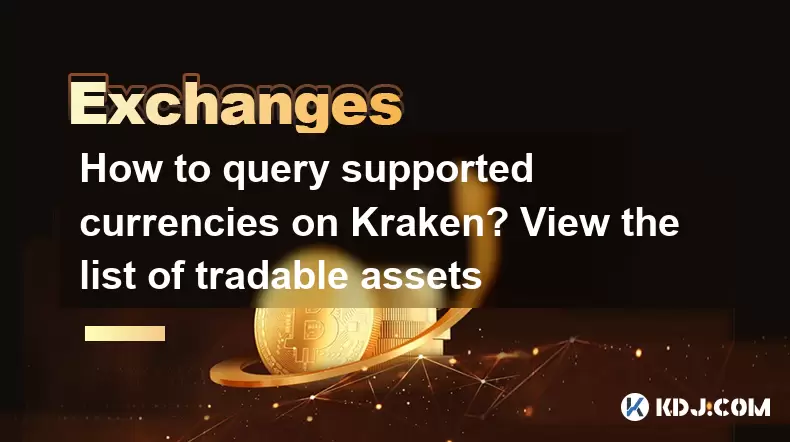
How to Query Supported Currencies on Kraken? View the List of Tradable Assets
Kraken is one of the leading cryptocurrency exchanges, offering a wide array of digital assets for trading. For users who are new to the platform or those looking to explore new trading opportunities, it is essential to know how to query the supported currencies and view the list of tradable assets on Kraken. This article will guide you through the process in detail.
Accessing the Kraken Website
The first step to querying supported currencies on Kraken is to access the Kraken website. You can do this by opening your preferred web browser and navigating to the official Kraken website at www.kraken.com. Once on the homepage, you will be greeted with an overview of the platform's features and services.
Navigating to the Markets Page
To view the list of tradable assets, you need to navigate to the Markets page. This page provides a comprehensive list of all the cryptocurrencies and trading pairs available on Kraken. Here's how you can access it:
- Click on the "Trade" button located at the top of the Kraken homepage.
- From the dropdown menu, select "Markets". This will take you directly to the Markets page where you can see all the supported currencies and trading pairs.
Understanding the Markets Page
The Markets page is designed to be user-friendly and informative. Upon arriving at this page, you will see a list of all the available cryptocurrencies and trading pairs. Each entry includes important information such as the trading pair, the current price, the 24-hour volume, and the percentage change over the last 24 hours.
- The trading pairs are listed in the format of "Asset/Fiat" or "Asset/Asset". For example, "BTC/USD" means Bitcoin paired with US Dollar, while "ETH/BTC" means Ethereum paired with Bitcoin.
- The current price shows the latest trading price of the pair.
- The 24-hour volume indicates the total amount of the asset traded in the last 24 hours.
- The percentage change over the last 24 hours helps you gauge the market sentiment and volatility of the asset.
Filtering and Searching for Specific Assets
Kraken provides various tools to help you filter and search for specific assets. This can be particularly useful if you are looking for a particular cryptocurrency or trading pair. Here's how you can use these tools:
- Use the search bar at the top of the Markets page to type in the name or ticker symbol of the asset you are interested in. As you type, the list will automatically filter to show relevant results.
- Filter by asset type using the dropdown menu labeled "All". You can choose to view only cryptocurrencies, fiat currencies, or stablecoins.
- Sort the list by different criteria such as price, volume, or percentage change by clicking on the corresponding column headers.
Accessing Detailed Information on Each Asset
For a more in-depth understanding of each asset, you can click on any trading pair to access its detailed page. This page provides additional information such as:
- Trading charts that show the price movement over different time frames.
- Order book which displays the current buy and sell orders for the trading pair.
- Trade history that lists all the recent trades executed for the pair.
- Market statistics including the highest and lowest prices over various periods.
By exploring these details, you can gain valuable insights into the performance and liquidity of the asset, helping you make informed trading decisions.
Using the Kraken API to Query Supported Currencies
For more advanced users, Kraken offers an API that allows you to programmatically query the supported currencies and view the list of tradable assets. The Kraken API is a powerful tool that can be used to automate trading and retrieve real-time data. Here's how you can use the API to query supported currencies:
- Sign up for a Kraken API key by navigating to the "API" section in your Kraken account settings. Follow the prompts to generate your API key and secret.
- Use the Kraken API endpoint
/0/public/AssetPairsto retrieve a list of all available trading pairs. You can make a GET request to this endpoint using your preferred programming language or tool. - Parse the response to extract the relevant information about each trading pair, such as the base and quote assets, the minimum and maximum order sizes, and the current trading fees.
By leveraging the Kraken API, you can efficiently query the supported currencies and stay updated on the latest tradable assets without manually navigating the website.
Frequently Asked Questions
Q: Can I trade all the cryptocurrencies listed on the Kraken Markets page?
A: Not necessarily. While the Markets page lists all the available trading pairs, some assets may be restricted based on your location or account type. Always check the specific trading pair's details to ensure it is available for trading in your region.
Q: How often is the list of supported currencies updated on Kraken?
A: Kraken regularly updates its list of supported currencies based on market demand and regulatory considerations. New assets may be added, and existing ones may be delisted. You can stay informed about these updates by subscribing to Kraken's official announcements and social media channels.
Q: Are there any fees associated with trading on Kraken?
A: Yes, Kraken charges trading fees that vary based on the trading pair and your account's 30-day trading volume. You can view the fee structure on the Kraken website under the "Fees" section. It's important to factor these fees into your trading strategy to maximize your returns.
Q: Can I use the Kraken mobile app to view the list of tradable assets?
A: Yes, the Kraken mobile app provides access to the same Markets page as the website, allowing you to view the list of tradable assets on the go. You can download the app from the Apple App Store or Google Play Store and log in with your Kraken account credentials.
Disclaimer:info@kdj.com
The information provided is not trading advice. kdj.com does not assume any responsibility for any investments made based on the information provided in this article. Cryptocurrencies are highly volatile and it is highly recommended that you invest with caution after thorough research!
If you believe that the content used on this website infringes your copyright, please contact us immediately (info@kdj.com) and we will delete it promptly.
- Bitcoin's Pattern Break: Are HODLers the Key to the Next Surge?
- 2025-07-04 18:50:12
- Bitcoin Price, Trump's Bill, and the $150K Dream: A NYC Take
- 2025-07-04 19:50:12
- Ethereum, LILPEPE, and the July Bounce: Will Pepe Steal ETH's Thunder?
- 2025-07-04 19:10:12
- Binance Institutional Loans: Unlocking 4x Leverage and Zero Interest for Whales
- 2025-07-04 19:15:12
- Bitcoin Bull Run: Analysts Eye Peak in Late 2025?
- 2025-07-04 19:20:13
- Pepe Indicators, Bullish Forecast: Can the Meme Coin Rally?
- 2025-07-04 19:25:12
Related knowledge
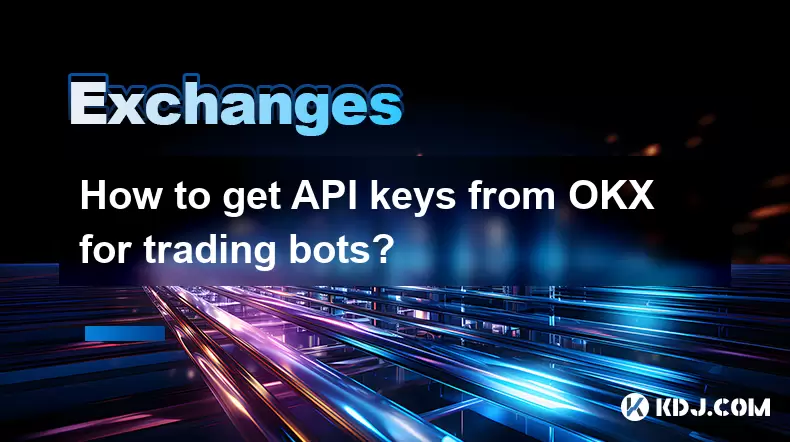
How to get API keys from OKX for trading bots?
Jul 03,2025 at 07:07am
Understanding API Keys on OKXTo interact with the OKX exchange programmatically, especially for building or running trading bots, you need to obtain an API key. An API (Application Programming Interface) key acts as a secure token that allows your bot to communicate with the exchange's servers. On OKX, these keys come with customizable permissions such ...
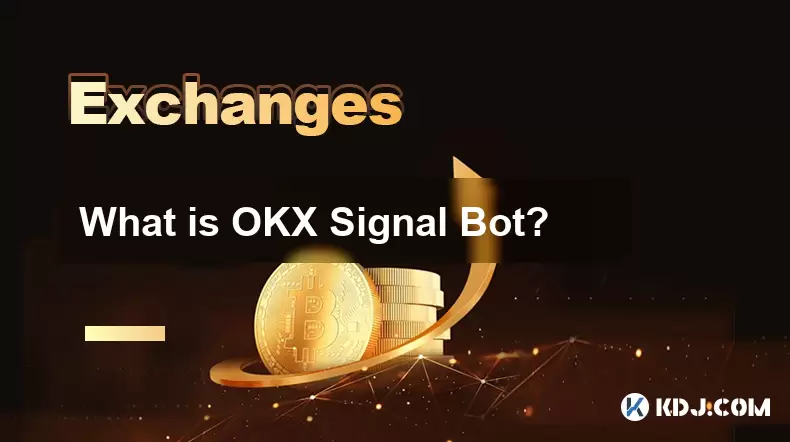
What is OKX Signal Bot?
Jul 02,2025 at 11:01pm
Understanding the Basics of OKX Signal BotThe OKX Signal Bot is a feature within the OKX ecosystem that provides users with automated trading signals and execution capabilities. Designed for both novice and experienced traders, this bot helps identify potential trading opportunities by analyzing market trends, technical indicators, and historical data. ...
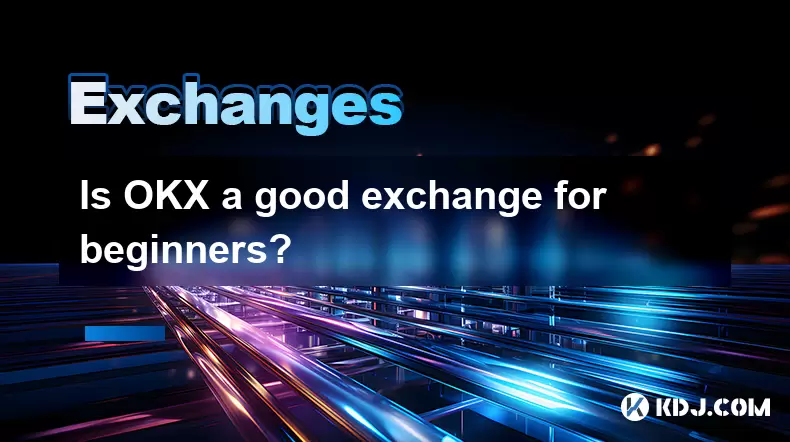
Is OKX a good exchange for beginners?
Jul 03,2025 at 05:00pm
What Is OKX and Why Is It Popular?OKX is one of the leading cryptocurrency exchanges globally, known for its robust trading infrastructure and a wide variety of digital assets available for trading. It supports over 300 cryptocurrencies, including major ones like Bitcoin (BTC), Ethereum (ETH), and Solana (SOL). The platform has gained popularity not onl...
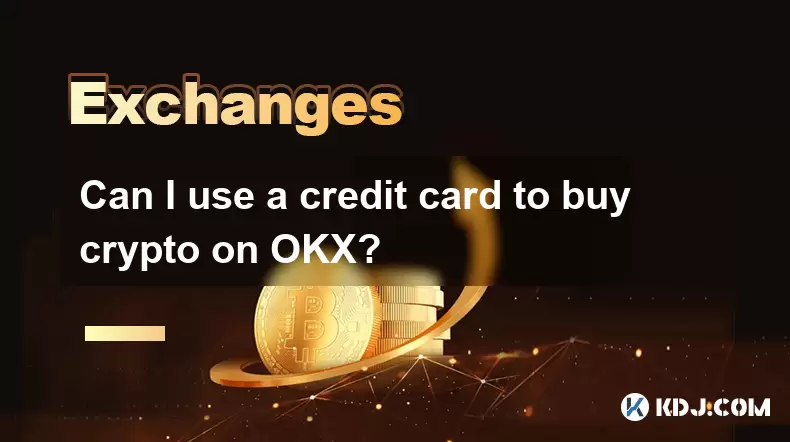
Can I use a credit card to buy crypto on OKX?
Jul 04,2025 at 04:28am
Understanding OKX and Credit Card PaymentsOKX is one of the leading cryptocurrency exchanges globally, offering a wide range of services including spot trading, derivatives, staking, and more. Users often wonder whether they can use a credit card to buy crypto on OKX, especially if they are new to the platform or looking for quick ways to enter the mark...
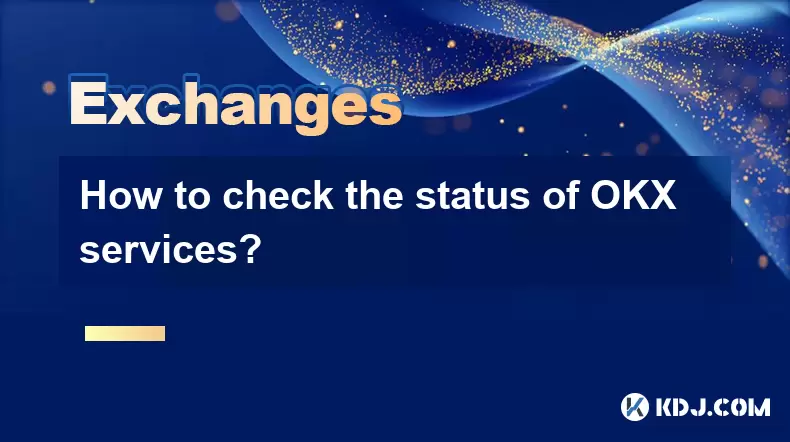
How to check the status of OKX services?
Jul 02,2025 at 11:14pm
What is OKX, and Why Checking Service Status Matters?OKX is one of the world’s leading cryptocurrency exchanges, offering services such as spot trading, futures trading, staking, and more. With millions of users relying on its platform for daily transactions, it's crucial to know how to check the status of OKX services. Downtime or maintenance can affec...
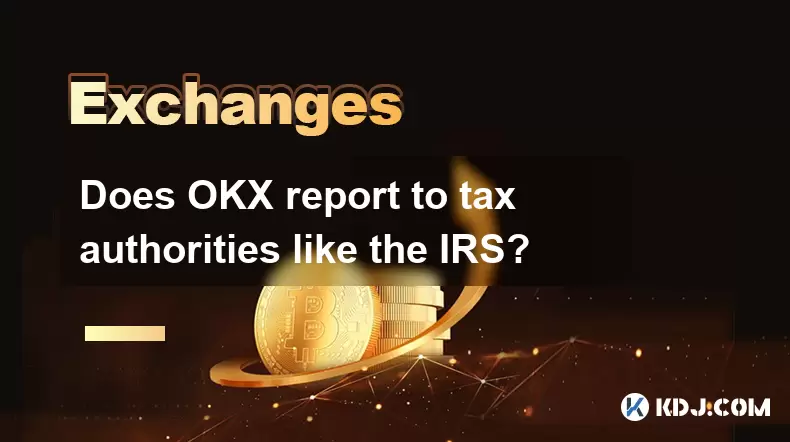
Does OKX report to tax authorities like the IRS?
Jul 03,2025 at 03:14pm
Understanding the Role of Cryptocurrency Exchanges in Tax ReportingCryptocurrency exchanges play a crucial role in facilitating digital asset transactions, but their responsibilities extend beyond trading and custody. As regulatory scrutiny intensifies globally, users are increasingly concerned about whether platforms like OKX report to tax authorities ...

How to get API keys from OKX for trading bots?
Jul 03,2025 at 07:07am
Understanding API Keys on OKXTo interact with the OKX exchange programmatically, especially for building or running trading bots, you need to obtain an API key. An API (Application Programming Interface) key acts as a secure token that allows your bot to communicate with the exchange's servers. On OKX, these keys come with customizable permissions such ...

What is OKX Signal Bot?
Jul 02,2025 at 11:01pm
Understanding the Basics of OKX Signal BotThe OKX Signal Bot is a feature within the OKX ecosystem that provides users with automated trading signals and execution capabilities. Designed for both novice and experienced traders, this bot helps identify potential trading opportunities by analyzing market trends, technical indicators, and historical data. ...

Is OKX a good exchange for beginners?
Jul 03,2025 at 05:00pm
What Is OKX and Why Is It Popular?OKX is one of the leading cryptocurrency exchanges globally, known for its robust trading infrastructure and a wide variety of digital assets available for trading. It supports over 300 cryptocurrencies, including major ones like Bitcoin (BTC), Ethereum (ETH), and Solana (SOL). The platform has gained popularity not onl...

Can I use a credit card to buy crypto on OKX?
Jul 04,2025 at 04:28am
Understanding OKX and Credit Card PaymentsOKX is one of the leading cryptocurrency exchanges globally, offering a wide range of services including spot trading, derivatives, staking, and more. Users often wonder whether they can use a credit card to buy crypto on OKX, especially if they are new to the platform or looking for quick ways to enter the mark...

How to check the status of OKX services?
Jul 02,2025 at 11:14pm
What is OKX, and Why Checking Service Status Matters?OKX is one of the world’s leading cryptocurrency exchanges, offering services such as spot trading, futures trading, staking, and more. With millions of users relying on its platform for daily transactions, it's crucial to know how to check the status of OKX services. Downtime or maintenance can affec...

Does OKX report to tax authorities like the IRS?
Jul 03,2025 at 03:14pm
Understanding the Role of Cryptocurrency Exchanges in Tax ReportingCryptocurrency exchanges play a crucial role in facilitating digital asset transactions, but their responsibilities extend beyond trading and custody. As regulatory scrutiny intensifies globally, users are increasingly concerned about whether platforms like OKX report to tax authorities ...
See all articles

























































































